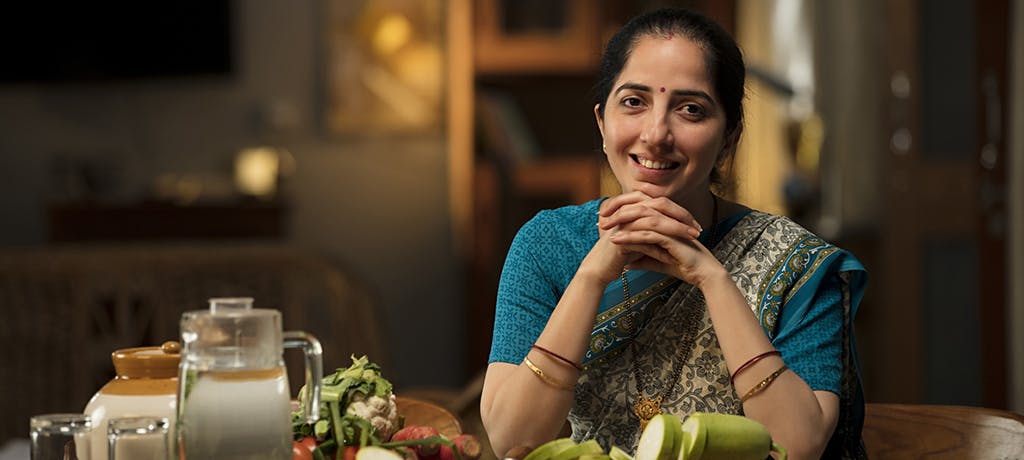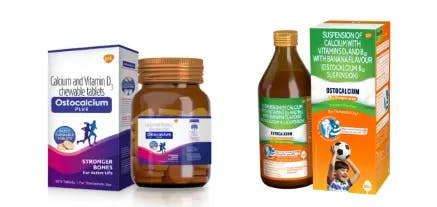Myth
Expose yourself to the early morning sun rays for maximum Vitamin D3 production
Fact
Many factors are in play when it comes to getting Vitamin D3 from sun exposure, such as the season, angle of the sun and the time of the day. For example, thick overcast clouds and different sun angle might reduce the production of active Vitamin D3. According to a study, the best time for sun exposure is between 11 am and 3 pm all through the year will promote Vitamin D3 production.
Myth
Standing frequently can also strengthen bones
Fact
For gain in bone mass to occur, the exercise must exert a stimulus that is greater than what the bone is used to. Standing can be categorized as a static force and hence does not help in bone mass or bone strength gain.
Myth
Calcium requirements remain the same throughout life
Fact
Calcium requirements vary as per age. According to the Indian Council for Medical Research, Calcium requirement for children and teenagers aged 10–17 years is 800 mg/day, whereas this goes as high as 1200 mg/day for pregnant and lactating mothers. Adults require 600 mg of calcium per day. Post-menopausal women require 800 mg of Calcium every day3,4. Food is the best source for getting Calcium. If you plan to consume a Calcium supplement, remember to consume only 500 mg of Calcium at a time. Our body finds it difficult to absorb more than 500 mg at once.
Myth
Calcium from green left leafy vegetables is highly bioavailable
Fact
Many green leafy vegetables, such as spinach, although rich in Calcium, cannot be considered to be a bioavailable source due to the presence of oxalates in them. Oxalates not only prevent absorption of Calcium from green leafy vegetables but also might hinder the absorption of calcium from other foods eaten along with it 8. However, green leafy vegetables provide Vitamin K, which also helps in building strong bones. So make sure to eat green leafy vegetables but not in combination with milk or other Calcium-rich foods.
Myth
Bones can be strengthened throughout life
Fact
Before we clear this fact, let us explain briefly about the bone. Our bones is a living tissue which is constantly broken down and rebuilt6. The best time for gaining bone strength and size is during childhood and adolescence. By 18 years in women and 20 years in men, our bone attains the maximum strength called as peak bone mass7. This means bone building exceeds bone break down. However, after 30 years of age, bone breakdown exceeds bone building. This means we lose bone strength gradually as we age. This imbalance between higher bone breakdown and low bone building can cause osteoporosis. Two things can ensure osteoporosis can be slowed down. This includes making the bones ‘strong’ in the first 30 years of life and by minimizing bone loss later on. These can be achieved by consuming sufficient Calcium, Vitamin D3 and getting regular weight bearing physical activity.
Conclusion
This article helps address some common myths and facts regarding bone health. For better bone health, adequate Calcium and Vitamin D3 intake and performing weight-bearing exercises help. However, it can be difficult to meet the recommended levels of the nutrients solely from food5. Thus for strong bones, you can consider consuming supplements of Calcium that also have Vitamin D3 for strong bones.
References
1. Harinarayan CV, Holick MF, Prasad UV, et al. Vitamin D3 status and sun exposure in India. Dermatoendocrinol. 2013;5(1):130–141. doi:10.4161/ derm.23873.
2. Office of the Surgeon General (US). Bone Health and Osteoporosis: A Report of the Surgeon General. Rockville (MD): Office of the Surgeon General (US); 2004. 7, Lifestyle Approaches to Promote Bone Health. Available from: https:/www.ncbi.nlm.nih.gov/books/NBK45523/. Accessed on: 01 September 2020.
3. Indian Council of Medical Research. Nutrient requirements and RDA for Indians – A report of the expert group of the ICMR 2010. Indian Menopause Society. Clinical Practice Guidelines on Management of Postmenopausal Osteoporosis. Available from: https:/indianmenopausesociety.org/wp-content/uploads/2018/07/Clinical-Practice-Guidelines-on-Menopause.pdf. Accessed on: 01 September 2020.
4. Harvard Health Publishing. Choosing a Calcium supplement. Available from: https:/www.health.harvard.edu/nutrition/choosing-aCalcium-supplement. Accessed on: 10 August 2020.
5. Harvard School of Public Health. Calcium: What’s Best for Your Bones and Health? Available from: https:/www.hsph.harvard.edu/nutritionsource/what-should-you-eat/Calcium-and-milk/Calcium-full-story/#slowing-osteo. Accessed on: 01 September 2020.
6. National Institute of Osteoporosis and related bone diseases. Osteoporosis: Peak Bone Mass in Women. Available from: https:/ www.bones.nih.gov/health-info/bone/osteoporosis/bone-mass. Accessed on: 03 September 2020.
7. British Nutrition Foundation. Dietary Calcium and health; briefing paper. p. 261. Available from: https:/onlinelibrary.wiley.com/doi/ full/10.1111/j.1467-3010.2005.00514.x. Accessed on: 11 August 2020




